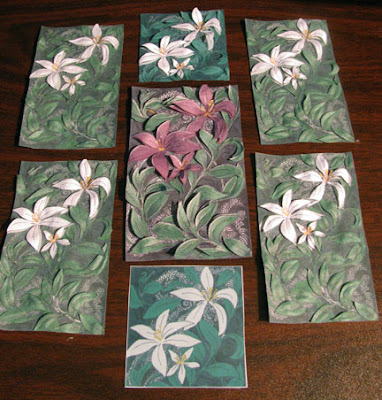It's been a great day, between lunch with a good friend at Lidia's Kansas City, and a stroll through two of Kansas City's great small art galleries on Baltimore St. near the Freight House, in the southern part of the Kansas City Crossroads.
The two galleries are similarly named near-neighbors, the Leedy-Voulkos Art Center, and Sherry Leedy Contemporary Art. This entry focuses on my visit to Leedy-Voulkos. In a later entry I'll talk about some fascinating artwork I found at Sherry Leedy.
Desert Fascination
The Art Center's Front Gallery is filled with wonderful images of desert wildlife (both flora and fauna) from the "Vanishing Circles" show.
The show features "portraits" of endangered or threatened species of the Sonora Desert. It is presented in cooperation with the Arizona-Sonora Desert Museum.
It is a departure from the Leedy-Voulkos' more usual type of contemporary art--more representational in a "realistic" manner. But it does any organization good to "shake things up" a little bit, even if that means showing what some might consider more "traditional" art forms.
The 29 artists whose work is included in the show certainly present a visually gorgeous show. The animals, from highly endangered pupfish to more widely-distributed ospreys and burrowing owls (whose habitat in the Sonora Desert is nonetheless disappearing), are beautiful, exotic, and presented by artists who know their craft deeply. The desert plants, many rather bizarre-looking to midwestern eyes, become objects of awe and wonder in some of these artworks.
Art of a Desert Recluse
Continuing the "desert theme" in an adjacent gallery is another collaboration between Leedy-Voulkos and the Arizona museum.
As a printmaking "major" back in the day, who is incorporating more and more printmaking concepts into my own art, I deeply appreciated the Sheridan Oman show.
Oman worked at he Arizona-Sonora Desert Museum for several years before retiring to the desert to create engravings of desert animals on copper plates.
He never had a show during his lifetime, but his monochrome prints fill the Opie Gallery at Leedy-Voulkos, and are well worth a close-up look.
The Art Center has several other shows running simultaneously with these. Please see their website for more information.
IMAGE CREDITS: Many thanks to the Leedy-Voulkos Art Center for the images by Rhonda Nass and Edward Aldrich. I am indebted to the Covington Gallery for the Oman "Otter."
 |
| Cactus Flower by Rhonda Nass, from Leedy-Voulkos. |
Desert Fascination
The Art Center's Front Gallery is filled with wonderful images of desert wildlife (both flora and fauna) from the "Vanishing Circles" show.
The show features "portraits" of endangered or threatened species of the Sonora Desert. It is presented in cooperation with the Arizona-Sonora Desert Museum.
 |
| Edward Aldrich's Brown Pelican |
The 29 artists whose work is included in the show certainly present a visually gorgeous show. The animals, from highly endangered pupfish to more widely-distributed ospreys and burrowing owls (whose habitat in the Sonora Desert is nonetheless disappearing), are beautiful, exotic, and presented by artists who know their craft deeply. The desert plants, many rather bizarre-looking to midwestern eyes, become objects of awe and wonder in some of these artworks.
 |
| Otter by Sheridan Oman |
Continuing the "desert theme" in an adjacent gallery is another collaboration between Leedy-Voulkos and the Arizona museum.
As a printmaking "major" back in the day, who is incorporating more and more printmaking concepts into my own art, I deeply appreciated the Sheridan Oman show.
Oman worked at he Arizona-Sonora Desert Museum for several years before retiring to the desert to create engravings of desert animals on copper plates.
He never had a show during his lifetime, but his monochrome prints fill the Opie Gallery at Leedy-Voulkos, and are well worth a close-up look.
The Art Center has several other shows running simultaneously with these. Please see their website for more information.
IMAGE CREDITS: Many thanks to the Leedy-Voulkos Art Center for the images by Rhonda Nass and Edward Aldrich. I am indebted to the Covington Gallery for the Oman "Otter."

















